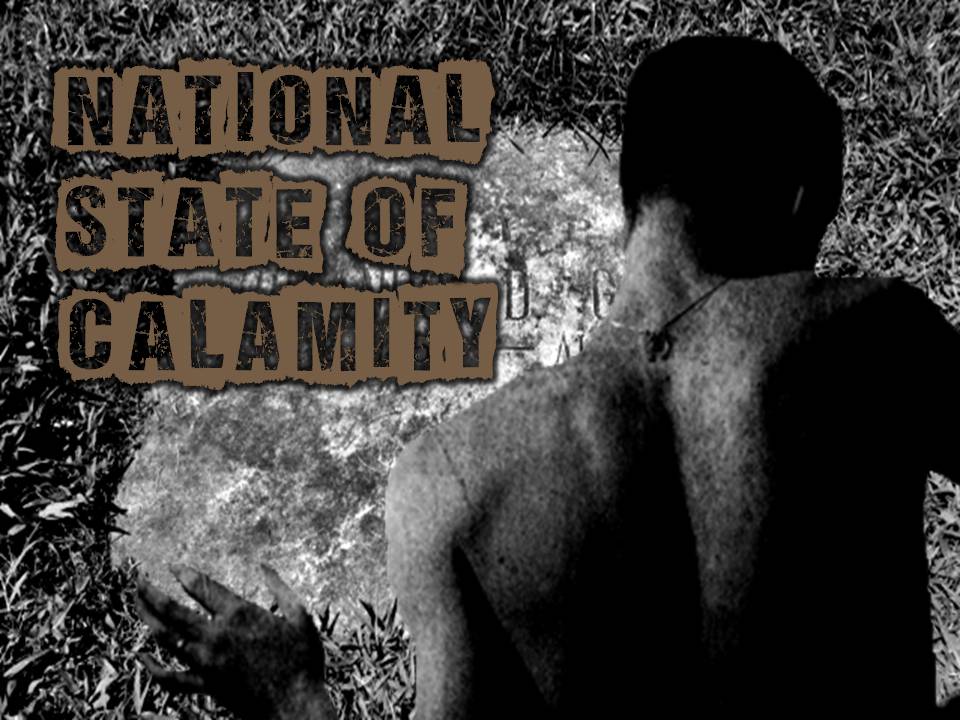Have We Done Enough?
A State of National Calamity has been declared.
All government agencies have been mobilized.
A prize freeze on all basic goods has been issued.
President Benigno Aquino III on Tuesday declared a state of national calamity and vowed to mobilize assistance for victims of the worst storm to hit his presidency.
He said he declared the state of calamity to start the mechanisms from which the government could get additional relief funding.
“I need to ask myself. Did the government do enough to prevent this kind of a tragedy? I don’t think I can accept that we have done everything,” President Noynoy Aquino told evacuees at Cagayan de Oro Central School during a lightning visit to the disaster zone four days after Tropical Storm “Sendong” struck.
“I know we could have done more.” He added.
Calamity Funds
The President said the calamity funds stood at P1.17 billion. Also “We can get P3 million from the (Asian Development Bank) while there is P500 million on standby that the World Bank would loan in case the funds that have long been prepared for these kinds of calamities run short,” he said. “There are also offers of help from Japan, America, Australia, Russia, China and other countries.”
“The calamity fund will be released immediately to help ease the plight of the victims of the storm. We are ensuring the quick release of these funds so that victims will receive swift and proper assistance” said Budget Secretary Florencio B. Abad.
He said that with the fund, the government “is generously equipped” to mobilize and support disaster relief efforts in Cagayan de Oro and Iligan as well as other affected areas.
Of Task Forces and Fact-Finding Teams
The President said that he had formed a multi-agency task force that would look into ways to improve the systems to alleviate the effects of natural disasters.
“There is also going to be a fact-finding team to determine exactly where we can still augment the systems and procedures in place so that there are no casualties of this magnitude ever again,” he said.
“I think all of us are aware exactly of certain situations that have happened, deforestation which has always been a problem,” the President said.
“We have a geo-hazard map that identified Isla De Oro as a place that will be a catch basin of floodwaters when a storm comes. Because we know the topography, we have also identified places where the waters will quickly flow,” Aquino said.
“Why were there still residents in these places? We don’t have any intention of fixing blame at this time. But it is our obligation to find out what happened.” he added
Aquino said he had instructed the Department of the Interior and Local Government and the Philippine National Police to prevent residents from returning to the danger areas such as riverbanks.
“Going back to danger areas should no longer be permitted. I want that very clear… no settlement in portions already described as extremely dangerous …like Isla De Oro, and neighboring barangays (villages),” the President said.
“To prevent a repeat of this tragedy, we need to know where there were shortcomings, who were at fault and how these should be made accountable,” he said, adding that he had ordered Mujiv Hataman, officer in charge of the Autonomous Region in Muslim Mindanao, to stop illegal logging.
Final Note/Huling Hirit:
Typhoons may be inevitable but the damage they may cause are preventable.
We should learn from the recent tragedy where at least 1,000 people were feared to have been killed.
It seems the proportion of the world’s population exposed to typhoons and cyclones has grown in the last few years but disaster management has not kept pace. That is why our leaders should take immediate and proactive steps to improve its disaster management practices to prevent another catastrophe of such magnitude.
I condole with the typhoon victims and at the same time urge the Philippine government to immediately address the root causes of the tragedy.
Poverty, environmental degradation, poor coordination and lack of preventive warning systems in the Philippines were identified as the probable causes that resulted in enormous loss of lives and damage to communities and infrastructure. We should understand the deadly cocktail of exposure and vulnerability created by poverty, rapid urbanization and deforestation which results in huge loss of life, homes and hard-won development gains when a storm of this magnitude strikes.
More must be done to educate people on disasters and climate change so they understand the risk they run when they refuse to heed warnings and do not evacuate on time.
This tragedy doesn't stop by merely giving relief goods to the victims. More than the relief goods and the perfunctory visits of the First Family to affected areas, what our Mindanaons ultimately need is justice for the criminal neglect of the government.
Justice must also be done for the survivors and those left behind.
The issue of disasters is inherently political in this regard as it involves government policies and accountability.
An investigation should really be conducted and responsible officials should be made answerable to law for their negligence.
Government officials concerned involved in allowing the illegal logging and indiscriminate mining in Mindanao should resign or be removed from office.
"There are many people who like to help, sans the fanfare and publicity.. They just want to help fellow Filipinos. :)"- Goyo Larrazabal


Those who govern, having much business on their hands, do not generally like to take the trouble of considering and carrying into execution new projects. The best public measures are therefore seldom adopted from previous wisdom, but forced by the occasion.
ReplyDeleteQuote from Benjamin Franklin.